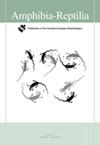标记还是不标记:标记和照片识别在幼年绿海龟(Chelonia mydas)长期标记捕获中的比较性能
IF 1.3
4区 生物学
Q3 ZOOLOGY
引用次数: 0
摘要
捕获-标记-再捕获(CMR)方法被广泛用于估计种群参数和收集动物人口统计学、迁移和生活史数据。海龟研究项目通常使用人工标签,这是一种侵入性方法。照片识别(PID)方法已成为动物识别的重要工具。在此,我们评估了PID方法标记绿海龟(Chelonia mydas)的有效性,并与传统方法(人工标签)进行了比较。作为长期CMR研究的一部分,自2001年以来,绿海龟一直被标记和拍照。我们使用Wild-ID软件分析了1917张带有标签的海龟的左右侧照片,并将这些结果与标签重新捕获数据进行了比较,以评估错误率(假阳性和阴性)和不同的有效性指标。PID和标签的组合(任何一种方法的匹配都被认为是再捕获)是识别再捕获的最无错误和最有效的标准;然而,它也是最耗时和侵入性的标准。我们还评估了图像质量指标对PID错误率的影响。我们发现海龟的清洁度增加了图像的相似性(间接与假阴性相关),但我们发现清晰度、角度、光照条件或图像像素的宽度和高度对错误率没有影响。我们可以得出结论,如果图像质量得到改善,可以用PID代替标签。然而,我们强烈建议研究人员在决定只应用PID之前考虑当地情况(副渔获物的发生或搁浅的死海龟,标签仍然是必要的)。本文章由计算机程序翻译,如有差异,请以英文原文为准。
To tag ornot to tag: comparative performance of tagging and photo-identification in a long-term mark-recapture of Juvenile Green Turtles (Chelonia mydas)
Capture-mark-recapture (CMR) methods are widely used to estimate population parameters and to collect data on animal demography, migration, and life history. Sea turtle research programs generally use artificial tags, an invasive method. Photo-identification (PID) methods have become an important tool for animal identification. Herein, we assessed the effectiveness of a PID method for marking green turtles (Chelonia mydas) compared to traditional methods (artificial tags). As a part of a long-term CMR study, green turtles have been tagged and photographed since 2001. We analyzed 1917 captures with left and right side photographs of tagged turtles using Wild-ID software, these results were compared with tag-recapture data to assess error rates (false positives and negatives), and different effectiveness metrics. A combination of PID and tags (a match from either method was considered a recapture) was the most error-free and efficient criterion for identification of recaptures; however, it was the most time consuming and invasive criterion as well. We also assessed the effect of image quality indicators on the error rates of PID. We found that turtle cleanliness increases the similarity of images (indirectly related to false negatives), but we found no effect of sharpness, angle, light condition, or width and height in pixels of images on error rates. We could conclude that if image quality is improved, tags could be substituted by PID. However, we strongly recommend researchers to consider local situations (occurrence of by-catch or stranded dead turtles, for which tags are still necessary) before deciding to apply only PID.
求助全文
通过发布文献求助,成功后即可免费获取论文全文。
去求助
来源期刊

Amphibia-Reptilia
生物-动物学
CiteScore
3.10
自引率
6.20%
发文量
39
审稿时长
6-12 weeks
期刊介绍:
Amphibia-Reptilia is a leading European multi-disciplinary journal devoted to most of the aspects of herpetology: ecology, behaviour, evolution, conservation, physiology, morphology, paleontology, genetics, and systematics.
Amphibia-Reptilia publishes high quality original papers, short-notes, reviews, book reviews and news of the Societas Europaea Herpetologica (SEH). The Societas Europaea Herpteologica (SEH) website is located at: www.seh-herpetology.org.
 求助内容:
求助内容: 应助结果提醒方式:
应助结果提醒方式:


